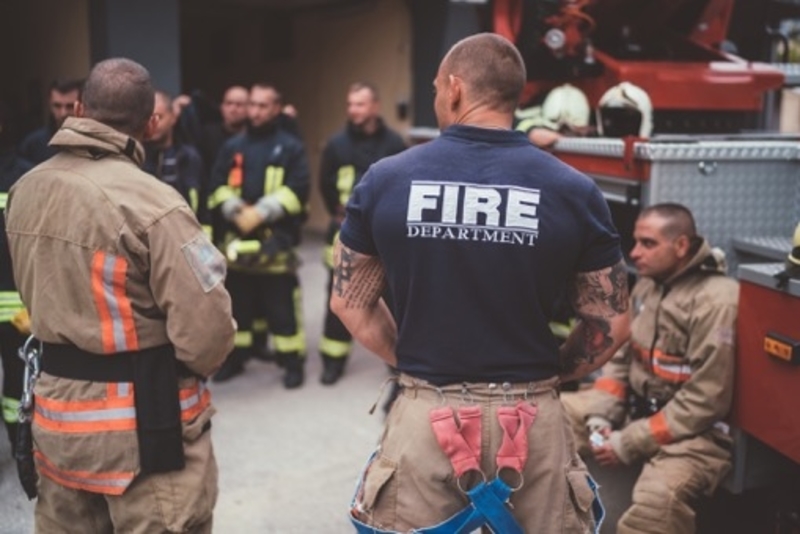Can you imagine your job being the root cause of your cancer diagnosis? It’s true, and no matter the reason, cancer – whether addressed with alternative cancer treatments or conventional modalities – can wipe out your savings and send you careening down a slippery slope toward financial toxicity.
A firefighter is among the most intense jobs any of us could imagine. Other than the hoopla around the annual beefcake calendar, there isn’t much glamour involved with suiting up and rushing into a burning building or leaping into action at the scene of a car crash …
Now, it seems the cancer rate among these life-saving heroes is rising. Fire departments in Boston, Calgary, Chicago, Houston, Los Angeles, New York, San Francisco, Seattle, and Toronto all report elevated cancer rates.
Among the more alarming statistics regarding firefighters and cancer: (1)
- Cancer caused 61% of the line-of-duty deaths from Jan. 1, 2002, to Dec. 31, 2016, according to data from the International Association of Fire Fighters (IAFF).
- Cancer caused 70% of the line-of-duty deaths for career firefighters in 2016.
- Firefighters have a 9% higher risk of being diagnosed with cancer than the general U.S. population.
- Firefighters have a 14% higher risk of dying from cancer than the general U.S. population.
Researchers say today’s firefighters face extraordinarily different blazes. Modern homes and businesses full of synthetics, plastics, and chemicals can explode much faster and coat firefighters in toxic soot. According to the Centers for Disease Control and Prevention, that includes formaldehyde, asbestos, and arsenic. (2)
Since 2002, almost two out of every three firefighters who died in the line of duty died of cancer, according to the International Association of Fire Fighters. A CDC/National Institute for Occupational Safety and Health study tracked nearly 30,000 firefighters across the country in 2010 and found higher rates of cancer than the general population.
The nonprofit Firefighter Cancer Support Network (FCSN) began in 2005 and has provided assistance and one-on-one mentoring to thousands of cancer-stricken firefighters and their families. FCSN also delivers extensive firefighter cancer awareness and prevention training nationwide.
The FCNS notes there is little data about cancer among volunteer firefighters, and the U.S. Fire Administration’s firefighter fatality statistics do not include cancer-related deaths, but it’s a stark reality: Firefighting increases cancer risks significantly for every firefighter.
The United States launched the Firefighter Cancer Registry in 2018. The CDC maintains a voluntary registry of firefighters, which includes the number and types of fires each firefighter attended. It also aims to track the careers and health histories of firefighters to better understand the link between emergency work and disease.
Heartfit for Duty is a Mesa, Arizona-based medical practice with an extension dedicated to fire department physicals, pre-employment candidate testing, and annual exams. Kepra Jack, co-owner and chief operations officer of Heartfit for Duty, has been in the first responder and public safety health field for more than 15 years. She works with 22 different fire agencies in the state of Arizona. (3)
When she hears a firefighter is denied workers’ compensation after contracting occupational cancer, she feels frustrated. “Laws don’t get passed by themselves, they get passed by showing proof, and that’s what we did,” she said. “We did it very well. We added a lot of cancers, and the way we were able to do that is to prove they came from the job.”
Boston Fire Commissioner Joseph Finn called cancer an “epidemic.”
“We’re seeing a lot of younger members in their 40s, early 40s, who’ve got 20 years on the job, who are developing these cancers at a very young age,” Finn told NBC News. (4)
In Boston, firefighters are ordered to keep their masks on until they are out of the smoke and washed down by decontamination teams on the scene. And back at the station, firefighters are being told to change into a second set of turnout gear while industrial washing machines clean the dirty equipment.
“I’ve buried way too many friends over my 33 years. Too many friends …” Finn said. “I tell [firefighters], ‘Think about your wife, your husband, your boyfriend, your girlfriend before you take that mask off your face.’”
If you are a firefighter facing cancer treatment, there are options to cover the cost of treatment. LifeGuide Partners assists and helps patients financially manage their cancer care, whether you seek an alternative cancer treatment or conventional ways.
LifeGuide will evaluate an existing life insurance policy to possibly convert it into much-needed cash to pay for cancer treatment. Regardless of which treatment you choose, having the financial means to fight cancer is vital.
Citations
(1) Firefighters and cancer. https://www.nfpa.org/News-and-Research/Resources/Emergency-Responders/Health-and-Wellness/Firefighters-and-cancer
(2) Firefighter Cancer Rates: The Facts from NIOSH Research. https://blogs.cdc.gov/niosh-science-blog/2017/05/10/ff-cancer-facts/
(3) Fighting Fires and Cancer: The doctors’ and cities’ opinions. https://ktar.com/story/2734739/fighting-fires-and-cancer-the-doctors-and-cities-opinions/
(4) Cancer Is the Biggest Killer of America’s Firefighters. https://www.nbcnews.com/health/cancer/cancer-biggest-killer-america-s-firefighters-n813411

